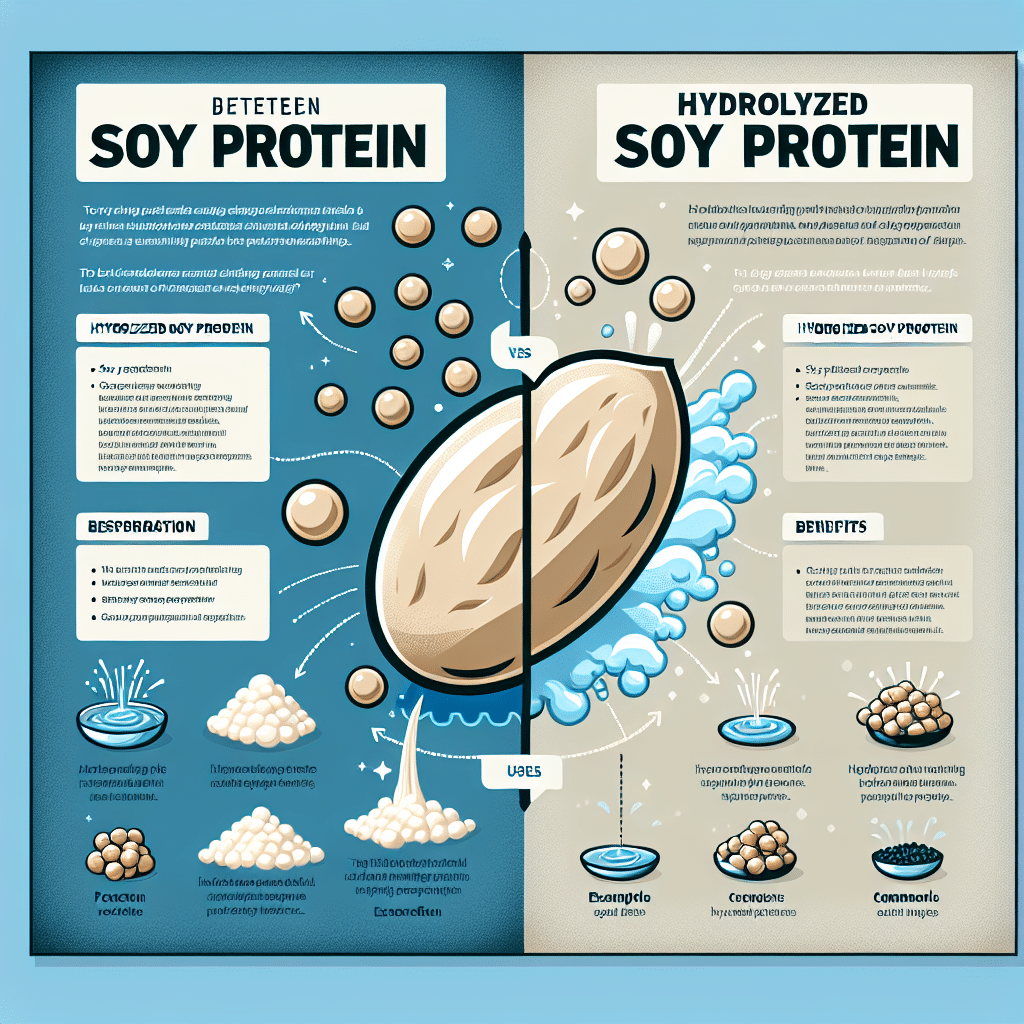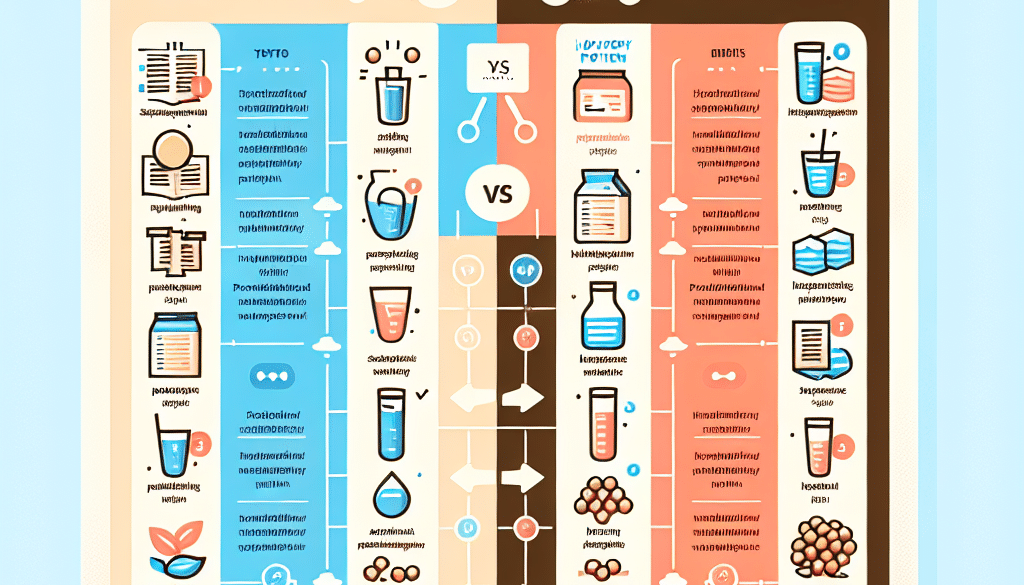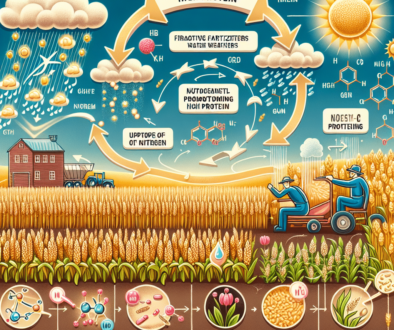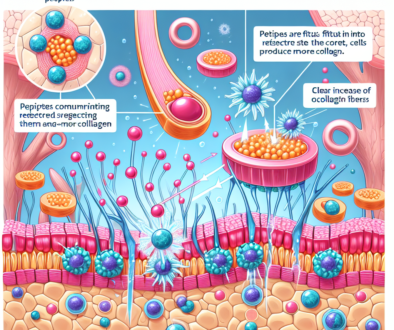What Is The Difference Between Soy Protein And Hydrolyzed Soy Protein?
-
Table of Contents
- Soy Protein vs. Hydrolyzed Soy Protein: Understanding the Differences
- What is Soy Protein?
- What is Hydrolyzed Soy Protein?
- Processing Methods and Nutritional Impact
- Soy Protein Processing
- Hydrolyzed Soy Protein Processing
- Nutritional Differences
- Functional and Sensory Differences
- Applications in Food and Nutrition
- Soy Protein Applications
- Hydrolyzed Soy Protein Applications
- Conclusion: Key Takeaways
- Discover ETprotein’s High-Quality Protein Products
Soy Protein vs. Hydrolyzed Soy Protein: Understanding the Differences

Protein is a crucial macronutrient that plays a vital role in building and repairing tissues, making enzymes and hormones, and supporting overall health. Among the various sources of protein, soy has emerged as a popular plant-based option. However, not all soy proteins are created equal. In this article, we will delve into the differences between soy protein and hydrolyzed soy protein, exploring their processing methods, nutritional profiles, and applications.
What is Soy Protein?
Soy protein is derived from soybeans, a legume rich in protein. It is a complete protein, meaning it contains all nine essential amino acids required by the human body. Soy protein is available in various forms, including soy protein isolate, soy protein concentrate, and textured soy protein. These forms are produced through different processing techniques that affect their protein content, taste, and digestibility.
What is Hydrolyzed Soy Protein?
Hydrolyzed soy protein is a form of soy protein that has undergone hydrolysis, a chemical process that breaks down the protein into smaller peptides and amino acids. This process is achieved by treating the soy protein with enzymes or acids, which cleave the peptide bonds. The resulting hydrolyzed protein is more easily digestible and can be absorbed more quickly by the body.
Processing Methods and Nutritional Impact
Soy Protein Processing
- Defatting: Soybeans are first cleaned and then defatted to remove the oil content.
- Dehulling: The outer hulls of the soybeans are removed to improve the texture and digestibility of the final product.
- Extraction: Soy protein is extracted from the defatted and dehulled soybeans using water or alcohol.
- Drying: The extracted soy protein is spray-dried into a powder form for use in various applications.
Hydrolyzed Soy Protein Processing
- Hydrolysis: After extraction, the soy protein undergoes hydrolysis, breaking down the protein structure.
- Enzymatic Treatment: Specific enzymes are used to target peptide bonds, ensuring a controlled hydrolysis process.
- Neutralization: The hydrolyzed protein is neutralized to stop the reaction and stabilize the product.
- Drying: Similar to soy protein, the hydrolyzed version is also dried into a powder form.
Nutritional Differences
While both soy protein and hydrolyzed soy protein originate from the same source, their nutritional profiles differ due to the processing methods. Hydrolyzed soy protein has a lower molecular weight, making it easier for the body to absorb. This can be particularly beneficial for individuals with digestive issues or for use in sports nutrition where rapid absorption is desired.
Additionally, hydrolyzed soy protein may have a reduced allergenic potential compared to regular soy protein, as the hydrolysis process can alter the structure of potential allergens. However, it is important to note that individuals with soy allergies should still exercise caution and consult with a healthcare professional before consuming any soy products.
Functional and Sensory Differences
The hydrolysis process not only affects the nutritional quality of soy protein but also its functional and sensory properties. Hydrolyzed soy protein often has a bitter taste due to the presence of smaller peptides. This can impact the flavor profile of products that include it as an ingredient. Manufacturers may use flavor masking agents or blend hydrolyzed soy protein with other ingredients to improve taste.
In terms of functionality, hydrolyzed soy protein can enhance the solubility and dispersibility of protein in liquid formulations, making it a preferred choice for ready-to-drink beverages and other liquid supplements. It also has improved emulsification properties, which can be advantageous in products like dressings, sauces, and meat analogs.
Applications in Food and Nutrition
Soy protein and hydrolyzed soy protein are used in a wide range of food and nutrition products. Here are some common applications:
Soy Protein Applications
- Meat alternatives: Soy protein is often used to create vegetarian and vegan meat substitutes due to its texture and protein content.
- Dairy alternatives: Soy milk, cheese, and yogurt are popular dairy-free options made with soy protein.
- Baked goods: Soy protein can enhance the nutritional profile of bread, cookies, and other baked items.
Hydrolyzed Soy Protein Applications
- Sports nutrition: Hydrolyzed soy protein is commonly found in protein shakes and bars for its rapid absorption rate.
- Infant formula: The hypoallergenic properties of hydrolyzed soy protein make it suitable for some infant formulas.
- Flavor enhancers: Hydrolyzed soy protein can be used as a natural flavor enhancer in savory products.
Conclusion: Key Takeaways
In summary, the main differences between soy protein and hydrolyzed soy protein lie in their processing methods and resulting nutritional and functional properties. Hydrolyzed soy protein offers enhanced digestibility and absorption, reduced allergenicity, and improved functional characteristics, making it suitable for specific dietary needs and applications. However, both forms of soy protein provide valuable plant-based protein options for those looking to diversify their protein sources.
Discover ETprotein’s High-Quality Protein Products
If you’re interested in incorporating soy protein or hydrolyzed soy protein into your diet or product line, ETprotein offers a range of high-quality protein products. Their selection includes organic and non-GMO options, catering to various industry needs. With a commitment to purity and excellence, ETprotein is a trusted supplier for consumers and businesses alike.
About ETprotein:
ETprotein, a reputable protein and L-(+)-Ergothioneine (EGT) Chinese factory manufacturer and supplier, is renowned for producing, stocking, exporting, and delivering the highest quality organic bulk vegan proteins and L-(+)-Ergothioneine. They include Organic rice protein, clear rice protein, pea protein, clear pea protein, watermelon seed protein, pumpkin seed protein, sunflower seed protein, mung bean protein, peanut protein, and L-(+)-Ergothioneine EGT Pharmaceutical grade, L-(+)-Ergothioneine EGT food grade, L-(+)-Ergothioneine EGT cosmetic grade, L-(+)-Ergothioneine EGT reference grade and L-(+)-Ergothioneine EGT standard. Their offerings, characterized by a neutral taste, non-GMO, allergen-free attributes, with L-(+)-Ergothioneine purity over 98%, 99%, cater to a diverse range of industries. They serve nutraceutical, pharmaceutical, cosmeceutical, veterinary, as well as food and beverage finished product distributors, traders, and manufacturers across Europe, USA, Canada, Australia, Thailand, Japan, Korea, Brazil, and Chile, among others.
ETprotein specialization includes exporting and delivering tailor-made protein powder and finished nutritional supplements. Their extensive product range covers sectors like Food and Beverage, Sports Nutrition, Weight Management, Dietary Supplements, Health and Wellness Products, and Infant Formula, ensuring comprehensive solutions to meet all your protein needs.
As a trusted company by leading global food and beverage brands and Fortune 500 companies, ETprotein reinforces China’s reputation in the global arena. For more information or to sample their products, please contact them and email sales(at)ETprotein.com today.












